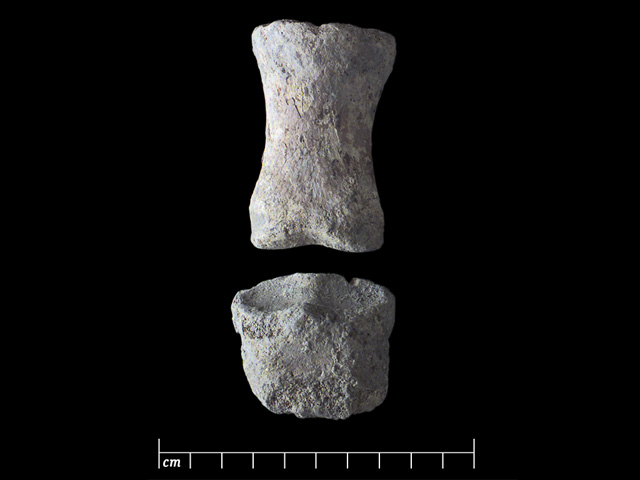 STUDIO PHOTOGRAPHS
STUDIO PHOTOGRAPHSIntroduction | Research | People | Tools
 STUDIO PHOTOGRAPHS
STUDIO PHOTOGRAPHS
PHALANGES OF HORSE (TYA 642: 1855a)
Type: Phalanges I and II of horse (Equus caballus).
Use: Mount or draught animal (faunal residue).
Site: Raisio, Ihala, Mulli abode.
Period: Viking Age / Crusade Age / Early Middle Ages.
Dating: 980-1220 A.D.
Photographer: Antti Huittinen.
The earliest ostheological evidence of the horse in Finland dates to the Late Bronze Age, or 1000 - 500 B.C. The Iron Age horse was smaller than the modern one. Its height was possibly around 120 - 130 cm.
Horses were used as draught, burden and riding animals. In summers people rode while trekking on land, since roads suitable for vehicles with wheels were very rare. The goods could be transported either on a pack-horse or with a croch, or structure built with two long staves that were fastened on the horse´s back and whose ends would drag on the earth.
During the winter, people used sleighs. This is because, with a sleigh, it was easier to drive on the frozen waterways.
Other related pictures:
Other related topics:
Coordinates: x=98, y=505-508, unit 3298.
Introduction | Research | People | Tools